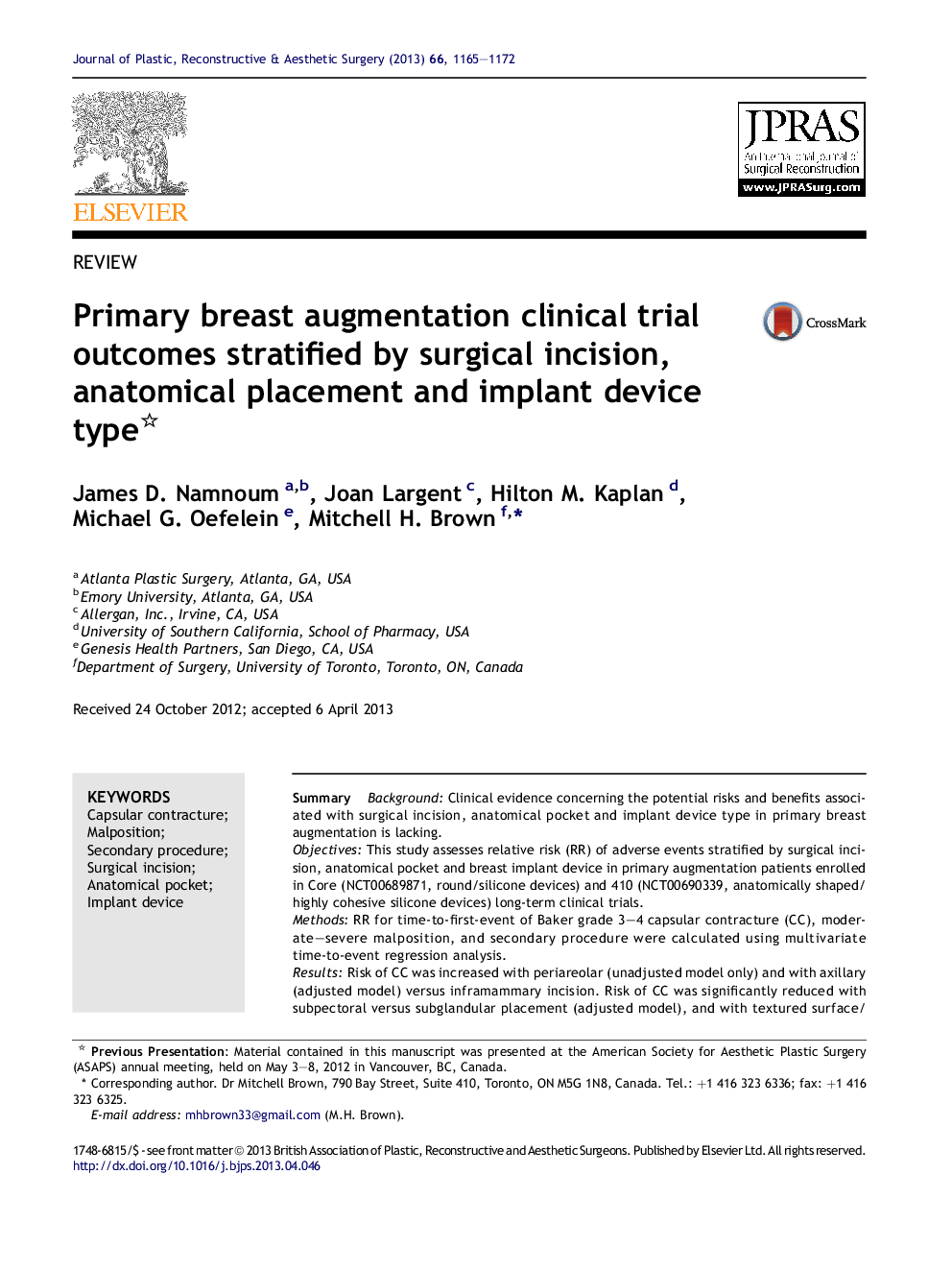| Article ID | Journal | Published Year | Pages | File Type |
|---|---|---|---|---|
| 4118364 | Journal of Plastic, Reconstructive & Aesthetic Surgery | 2013 | 8 Pages |
SummaryBackgroundClinical evidence concerning the potential risks and benefits associated with surgical incision, anatomical pocket and implant device type in primary breast augmentation is lacking.ObjectivesThis study assesses relative risk (RR) of adverse events stratified by surgical incision, anatomical pocket and breast implant device in primary augmentation patients enrolled in Core (NCT00689871, round/silicone devices) and 410 (NCT00690339, anatomically shaped/highly cohesive silicone devices) long-term clinical trials.MethodsRR for time-to-first-event of Baker grade 3–4 capsular contracture (CC), moderate–severe malposition, and secondary procedure were calculated using multivariate time-to-event regression analysis.ResultsRisk of CC was increased with periareolar (unadjusted model only) and with axillary (adjusted model) versus inframammary incision. Risk of CC was significantly reduced with subpectoral versus subglandular placement (adjusted model), and with textured surface/round/silicone-filled devices and textured surface/shaped/highly cohesive silicone-filled devices versus smooth surface/round/silicone-filled devices (adjusted model). Risk of CC was significantly reduced with textured surface devices independent of subpectoral or subglandular placement (adjusted model). In a number-needed-to-treat analysis, 7–9 patients needed to be treated with a textured surface device to prevent one Baker grade 3–4 CC over 10 years. Risk of moderate–severe malposition was significantly increased with periareolar (adjusted model) and axillary (adjusted model) versus inframammary incision; and significantly lower with textured surface/shaped/highly cohesive silicone-filled devices than with smooth surface/round/silicone-filled devices (adjusted model). Risk of secondary procedures was significantly increased with periareolar (adjusted model) and axillary (adjusted model) versus inframammary incision; and significantly reduced with textured surface/shaped/highly cohesive silicone-filled devices versus smooth surface/round/silicone-filled devices (adjusted model).ConclusionsIn primary breast augmentation, surgical incision, anatomical pocket, and device were significant predictors of clinical outcomes: capsular contracture, malposition and secondary procedure.
